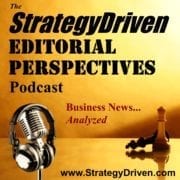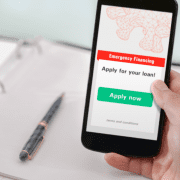Defining the Problem Is Often More Difficult Than Solving It
Albert Einstein once said, “If I had only one hour to save the world, I would spend 55 minutes defining the problem, and only 5 minutes finding the solution.” Einstein implies that scientific advances come not so much from thinking up new solutions as from formulating problems in new ways or seeing them from different angles.
When it comes to entrepreneurship, Einstein’s emphasis on problem definition is spot on. Indeed, a strong definition of the customer’s problem is essential in creating a winning business solution. However, customer problems are typically not formulaic like scientific problems. Most people struggle with addressing complex problems because they don’t know where to start, which often leads to knee-jerk definitions of the problem. This usually isn’t a wise move. Due to the nature of complex problems, quick decision-making can cause a person or team to miss very important, but not obvious, factors in the situation. Solving complex problems requires slowing down and considering the different variables involved and how they interact.
Defining the problem demands a very organic approach in which unexpected issues can emerge that bring new perspectives on the problem space. Rarely will there be a single “correct” problem. In fact, most problems are interrelated to a set of different and potentially useful challenges.
Such organic problem definition utilizes two tools to successfully capture the customer problem space: challenge statements and challenge mapping.
Challenge Statements
Framing problems into challenge statements is one of the most important skills in problem definition. The phrase, “How might we?” is the powerful phrase that transforms converged facts into actionable challenges.
For example, a fact such as, “The customer prefers to shop with others as a group experience,” can be converted into the challenge statement, “How might we make our store more inviting for groups to shop?” Seeking possible solutions — including those beyond the obvious — is a critical practice in creative problem-solving. Therefore, we might also convert the fact into “How might we design the store layout to be more comfortable in dressing room areas?” or “How might we provide customer attention geared to groups and not just individual shoppers?”
These are just a few examples of the challenge statements that could be derived from this fact. There are potentially many more.
Challenge Mapping
Challenge mapping enables you to get a 50,000-foot view of the problem space instead of being mired in one particular aspect of it. In crafting the challenge map, gather easel paper, large Post-It notes, sticky dots, and markers. As a starting point, write a “How might we” challenge statement on a Post-It note and place it in the middle of the map.
Next, broaden your “How might we?” point of view by using a “why-what’s stopping us” analysis. For example, using the earlier retail store example in which the challenge is “How might we design the store layout to be more comfortable in dressing room areas?” ask the two simple questions, “Why would we want to design the store layout to be more comfortable in dressing room areas?” and “What’s stopping us from designing the store layout to be more comfortable in dressing room areas?”
State a specific answer to the question in a simple, complete sentence — so for the question “Why would we want to design the store layout to be more comfortable in dressing room areas?” an answer might be “So that groups will linger longer in the store.” If the other question is asked, “What’s stopping us from designing the store layout to be more comfortable in dressing room areas?” an answer might be, “We haven’t found room to put sofas and chairs near the dressing room.”
Convert the answers into new “How might we…?” statements: “So that groups will linger longer in the store” now could become “How might we entice groups to linger longer in the store?” And “We haven’t found room yet to put sofas and chairs near the dressing room” now becomes “How might we find room for sofas and chairs near the dressing room?” Asking the question “why” of a challenge and then restating the answer into a new challenge broadens your problem definition.
Write the “why-what’s stopping us” answers on Post-It notes and stick them in their appropriate locations under the “how might we” notes on the map. As you answer the questions, you may find that another answer to a “why” or “what’s stopping us” question alongside an earlier answer fits between the challenge statements. Draw arrows connecting logical connections.
The map’s organic quality enables the original “How might we” question that started on the map to become only one challenge among many. A problem space can begin to emerge by repeating the use of the “why-what’s stopping us” analysis. Each answer leads to at least one more fresh challenge that offers new insights.
A good challenge map is considered complete when participants can no longer generate answers to “why-what’s stopping us” questions. It’s now time to converge on the key problems found on it.
Ask each participant to identify the top two or three “How might we” statements on the map that, if solved, would bring great satisfaction. Have them place a dot on the two or three they consider the most important obstacles to clear.
Next, ask each person who marked the Post-It to explain (clarify) why they did so. Clarification often helps participants see the choices in a new light, so a selection that received only one dot may actually end up being chosen in the end. This is why simply voting isn’t advocated.
After clarification is complete, the group chooses the top two-to-five challenge statements to move forward.
The essence of good problem definition is that a complex problem is actually a field of connected broad and narrow problems. Successfully capturing the problem space through challenge statements and challenge mapping allows people to intuitively think about different issues around a problem. Without a process, they lack a coherent view of the big picture.
* * *
Min Basadur is Professor Emeritus of Innovation at McMaster University, Canada, and founder of Basadur Applied Creativity. Michael Goldsby is Stoops Distinguished Professor of Entrepreneurship and Chief Entrepreneurship Officer at Ball State University. Rob Mathews is Executive Director of the Entrepreneurial Leadership Institute at Ball University. Their new book, Design-Centered Entrepreneurship, Second Edition (Routledge, 2022), provides a research-driven, step-by-step approach to creative problem-solving. Learn more at https://elprofile.com/.













Great summary of why focusing on the problem we’re trying to solve is SO important and incredibly helpful.
I’ve seen that with discipline, by thinking about that problem statement first, it really turns everyone’s attention to helping the user achieve their goals and creates a common vision across my team…